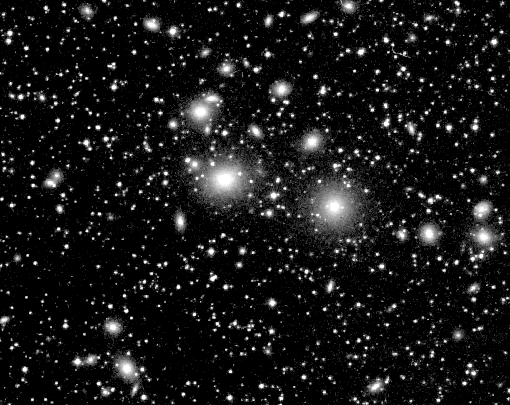Explanation: Here is one of the largest objects that anyone will ever see on the sky. Each of the fuzzy blobs in the above picture is a galaxy, together making up the Perseus Cluster, one of the closest clusters of galaxies. We view the cluster through the foreground of faint stars in our own Milky Way Galaxy. It takes light roughly 300 million years to get here from there, so we only see this cluster as it existed during the age of the dinosaurs. Also known as Abell 426, the center of Perseus cluster is a prodigious source of X-ray radiation, and so helps astronomers study how clusters formed and how gas and dark matter interact. The Perseus Cluster of Galaxies is part of the Pisces-Perseus supercluster of galaxies, which spans over 15 degrees and contains over 1000 galaxies.
1999 2000 2001 2002 2003 2004 2005 2006 2007 2008 2009 2010 2011 2012 2013 2014 2015 2016 2017 2018 2019 2020 2021 2022 2023 2024 2025 |
Yanvar' Fevral' Mart Aprel' Mai Iyun' Iyul' Avgust Sentyabr' Oktyabr' Noyabr' Dekabr' |
NASA Web Site Statements, Warnings, and Disclaimers
NASA Official: Jay Norris. Specific rights apply.
A service of: LHEA at NASA / GSFC
& Michigan Tech. U.
|
Publikacii s klyuchevymi slovami:
Perseus cluster - Skoplenie galaktik - rentgenovskie luchi - sverhskopleniya galaktik - temnaya materiya
Publikacii so slovami: Perseus cluster - Skoplenie galaktik - rentgenovskie luchi - sverhskopleniya galaktik - temnaya materiya | |
Sm. takzhe:
Vse publikacii na tu zhe temu >> | |
